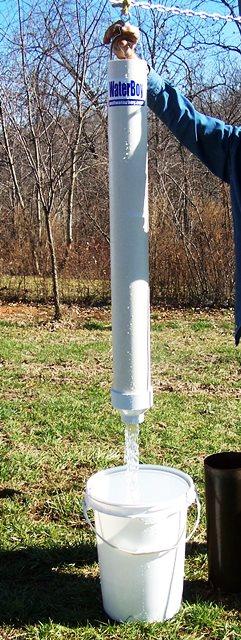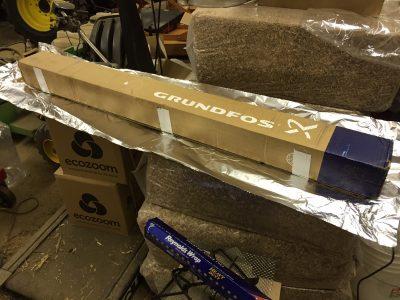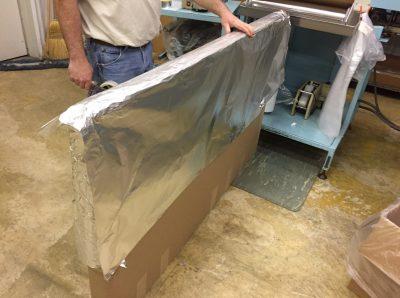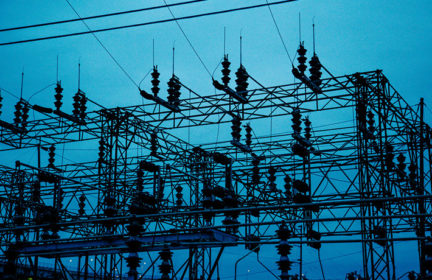Rural preparing – manual well pump backup?
I’m newer to prepping (starting lurking on The Prepared in March 2020 after realizing I was woefully underprepared when COVID lockdowns hit). I’m looking for advice on prepping in a rural location.
We already live in a rural area in Minnesota, which is great, so I don’t have to worry as much about bugging out. But, I’m trying to figure out what steps to take to bolster our shelter-in-place plan.
We already have a dual-fuel generator that is wired to our house to run core services like septic/well pump/appliances/HVAC/etc., large on-site propane stores, spare fuel for the generator, a bunch of 5-7 gallon Reliance water containers, extra food stores, personal/home protection gear/supplies, and some moderately equipped bug out bags in case we do need to leave.
I have a question that I haven’t yet been able to resolve. We have a private well on our property that uses an electric pump to draw water into the house. The well pump is set up to be able to run on the backup generator, so we’d certainly be able to grab a bunch of fresh water if we lost power for any length of time. Is a manual pump necessary as a fail-safe? I’m semi-handy, so I feel like I could figure out setting up the manual pump as a backup, but is that overengineering it? Is it worth the effort?
Thanks in advance!!
-
Comments (25)
-
Bob - February 10, 2021
For a specific reply to the question: Yes – as a fail-safe. The overengineering and worth (labor and costs) am not addrerssing.
I asked a similiar question at a different site … perhaps here also … for fail-safe matters.
It would probably be advantageois to visit a shop in your area and check into some attachment that a lever would allow a switch from the power-operated pump apparatus to manual. My plans changed for a couple of major reasons. I’m transmitting from the Virginia tidal flood plain.
-
pwocken - February 11, 2021
Thanks for jumping in. Yeah, I suppose it definitely makes sense as a fail-safe. I mean, would it be prudent to build redundancies, but then I suppose it’s the cost-benefit discussion. I like the idea of a switch to quickly go between electric and manual.
-
-
Hermit - February 10, 2021
I’ve been looking at rigs like those found at flojak.com. There are other manufacturers/suppliers as well, and I’m thinking it would be very useful sort of system to have in place.
I’d love to read about the experiences others may have had with them.
-
Bob - February 10, 2021
I was probably looking at Flojak products at my area’s well supply store.
Since I had to stop my project, can’t provide experience.
It could prove advantageous to visit one of your area’s well house supply stores and just “look around”. For research, if appropriate, ask about any local contractors who have experience in doing this manual add-on. The more info, from various sources, the better.
Here, it’s realistic to envision a mandatory evacuation off the tidal flood plain. This area is also one of 5 major routes connecting Navy Norfolk to metro-Washington, D.C. Two terrorist events occured in last 19 years meaning that the probability of this area becomming an evac zone is realistic. Electricity will be as rare as fresh water.
-
pwocken - February 11, 2021
I hadn’t heard of that one before; I’ll check out the Flojak. I’d be curious on the difference between a Flojak and the Bison option I was initially looking at.
-
-
Bill Masen - February 10, 2021
Manual pumps are massively labour intensive and during a crisis you will have your hands full with other things like patrolling, canning, monitoring the radio, tending the garden etc. so consider a good old wind powered water lift pump, Or a Solar powered water pump.
-
RedneckContributor - February 10, 2021
I couldn’t agree more. On the front end, manual pumps seem to make sense, but they require a lot of work and actually don’t provide a fraction of the water that your electric pump provides. I looked into them & for me, they didn’t meet my needs. I considered wind driven but while doing my research, I decided to go with a Grundfos Flex well pump. They are rather unique. They can operate on AC or DC and will operate with low voltage. Run a normal pump on low voltage and it will burn up. This just pumps less. If you direct wire a solar panel to it, it will start pumping. I also purchased the control circuitry to allow it to run off of solar panels and keep the pressure tank pressurized. This electronics includes a pressure switch to accomplish that task.
The cheapest way to get minimal water from your well is to get a well bucket, that you send down & pull up. That can provide a couple of gallons of that fresh, cool, clean well water with each trip. You can make your own (there is a discussion here on this site) or you can purchase one. I use the Well Water Boy. For either method, you will need to have the tool to attach to the pitless adapter, so as to remove the old pump. This discussion might help explain the process.
-
pwocken - February 11, 2021
Bill and Redneck, great points. Hadn’t thought of more mechanical (or low voltage) options that could still meet our needs without the need to go out and manually pump every time.
The Water Boy looks interesting also as an ultra low-tech option.
-
RedneckContributor - February 11, 2021
IMO, anyone with a home well should have a well bucket & the means/knowhow to get it down to your water. It is the cheapest way to access your water and the simplest. Put a tripod, or similar above the well and with some pulleys, anyone can pull up the bucket. I prep for an extended grid down scenario, so I have lots of pulleys & ropes.
-
John AdamaStaff - February 11, 2021
-
pwocken - February 11, 2021
Redneck and John, thank you! That kit list is perfect, thank you for sharing.
Off-topic: John, thanks for all you’ve done with the site and community! The Prepared has really helped me and the Mrs. rationally dip our toes into the preparedness/readiness waters without feeling paranoid or doomsday-ish. Keep up the great work!
-
John AdamaStaff - February 11, 2021
Thank you for the kind words, you’re so welcome! We’re a small team working hard to do things ‘the right way’, so it’s great to hear when it’s working 🙂 Still a ton to do though — and the community depends on people like yall in this convo, no way we can do it alone.
-
-
Bill Masen - February 11, 2021
Darn it I forgot to mention that if your well is high up on your property and you have some real low lying land you could simply syphon the water out providing your well is not deeper than your low laying land.
-
pwocken - February 11, 2021
Never discount the cost-effectiveness of good ol’ fashioned physics, right? 🙂
-
-
Robert LarsonContributor - February 11, 2021
While I don’t have a private well myself, i’ve thought about this situation for the time when I do get a well and i’ve enjoyed learning from everyone on here about what they do.
Now this may change when I get to that point, but I believe in redundancy. I’d have my main well pump, and a secondary pump that could be powered by solar or wind, and then have a manual way to pull water up such as that Water Boy PVC thing that Redneck shared.
Water is so critical to our lives, you don’t want to have a power outage, EMP, or something to keep you from getting your water. More than likely my pump would go out when times were good and I could order one and have it to my house in 2-3 days. But we are here because we believe in being prepared, so I believe in having dumb caveman backups for things like a bucket and a string to pull water up in a very worst case scenario.
-Be Prepared-
-
RedneckContributor - February 11, 2021
Obviously, like you, I consider having access to clean water as a top priority. As you state, redundancy is the way to go. There are lots of home wells out in the country but almost no one has the tools or knowledge to access that water when the grid is down. Forums like this can teach how to do so.
And if you prep for an EMP type event, then I suggest you protect that backup pump. Here is my Grundfos getting wrapped in several layers of foil. With the cardboard box, foil makes a great Faraday enclosure. For next to no money, once can protect critical equipment from that danger.
-
Bill Masen - February 11, 2021
Yup if its electrical it needs protecting from CMEs or EMPs, and all back up electrical kit should be in faraday cage type containers.
-
RedneckContributor - February 11, 2021
Yep. Even wrapped my solar panels in cardboard, several layers of foil and another protective layer of cardboard.
-
-
Juna - February 13, 2021
Hi pwocken,
9 years ago we installed a solar pump system (Lorentz is the brand name) and we have had a fairly good experience with it so far. We also use a normal electric AC pump.
The normal AC pumps are 1) cheap 2) easy to repair 3) easy to install yourself 4) when shtf and the power goes off you’re in trouble what water concerns
Solar DC pumps are 1) expensive 2) difficult to repair 3) difficult to install yourself, not the hydraulic part but the electronics involved in it 4) when there is a power grid failure you’re ok with water
Looking back now I would; install a decent solar power system and use only AC pumps, adjusting the pumping (in a 2000 liter tank) to the hours of most sunlight.
In winter it rains a lot here and we collect and store rainwater in a 5000 liter tank uphill.
Good luck!
-
pwocken - February 15, 2021
Appreciate the hindsight, Juna! It’s so great to hear how others have tackled this problem.
-
-
Pops - February 18, 2021
I didn’t see it mentioned but your options depend entirely on the well depth. A shallow well, less that 25′, you have many options, including “decorative” hand pumps like from tractor supply, or buckets, homemade or bought.
A little deeper and it is still doable for a novice to pull the pump and use a bucket.
Deeper wells need more expensive solutions, I had a Simple Pump. Pretty expensive, around $3k+ for my 300′ well 15 years ago. They are super strong but a workout at that depth. They coexist with your submersible.
Coexisting with your “regular” submersible is really important. Unless the casing (the pipe that lines the well) is really big, 8″+, you would need to pull up all the pipe the electric pump is attached to in order to use a bucket. Fine if the world isn’t restarting soon but tough if the power is only out for a week or two. 300′ of pipe is heavy, loose it down the hole and it is a lot of fishin’ —and not the fun kind!
I like the idea of the Grundfos mentioned if funds allow. I would run it on mains power normally, with backup solar and genny.
Baring all of that, your propane genny, running 10min a couple of times a day would last quite a while. After an ice storm we operated 3 weeks on a gas genny that way, watering a few cattle and various critters too. I don’t think we used more that 5-10 gallons. After that however is when I had the old pump pulled and installed a new one along with the Simple.
-
RedneckContributor - February 18, 2021
The one issue of running your Grundfos (or similar DC pump) on mains, is that if we were to have some sort on EMP type event, be it man made or from the sun, your backup pump could get fried. Might be a way to properly filter out such a surge, but I don’t think I’d trust it. That is why my pump is sitting on a shelf, in a Faraday enclosure.
-
Pops - February 18, 2021
I think you’re right, there are mil-spec and communications grade units but I suppose very expensive. Lightning arrestors don’t cost all that much but are too slow for the initial and fastest EMP I think. It is the old conundrum of cost/benefit or budget/worry. If EMP is high on a persons list then probably worth it. Still would be a bear to DIY a deep well pump R&R.
OTOH, at what point do you deploy the backup? A day after the event? A week, month? Just thinking about it casually, it would make sense for an attacker to wait a while after the initial attack for a second, a coup de gras.
But in the same vein, Simple Pump has a motor conversion kit that can be quickly changed out for the manual handle, so the motor can sit on the shelf and there is still the handle for short term use? According to the site, on the simplest units there is no semi-conductor type controls so perhaps safe? Or, using the same yoke one could rig a small engine or even a replacement motor.
Just random ideas :^)
-
pint of beer - February 18, 2021
those are some good thoughts. you never know if they will come back with a second emp.
i also like your idea of a manual pump that can have a motor attached if wanted. best of both worlds. hope we never get to that point though…
-
RedneckContributor - February 18, 2021
I’m sure I wouldn’t deploy the backup pump for a few weeks. Initially, I’d pull the AC pump out & use the well bucket. As far as a second EMP attack, I really wouldn’t expect one. Our military has pretty danged good EMP protection, so whoever did it would probably be a smoking hole in the ground within a few days… assuming a major power did it. If it was a terrorist organization, I don’t see them getting away with another strike & highly doubt they would plan on one. Keep in mind, after such an attack, our military will be mostly unharmed.
I prep for such, as much for a natural solar event as an attack. And as of now, I think only North Korea would be the only capable power willing to risk complete destruction to attack us. As for a solar event, it is not a matter of if… but when.
I looked at the Simple pump and others, and IMO they couldn’t supply the volume of water I would need on my farm, to include lots of drip irrigation. They seemed to be fine for providing enough for household needs but then I think the bucket does too… and much cheaper.
-
-
- Fun ways to teach kids outdoor/survival skills - 4 days ago
- News for the week of 2025-06-30 - 5 days ago
- News for the week of 2025-06-23 - 2 weeks ago
- News for the week of 2025-06-16 - 2 weeks ago
- News for the week of 2025-06-09 - 4 weeks ago
This forum is heavily moderated to keep things valuable to as many people as possible. Full community policies are here. The basics:
- 1. Be nice to each other.
- 2. Stay focused on prepping.
- 3. Avoid politics, religion, and other arguments.
- 4. No unfounded conspiracies, fake news, etc.
- 5. Debate ideas, not people.




